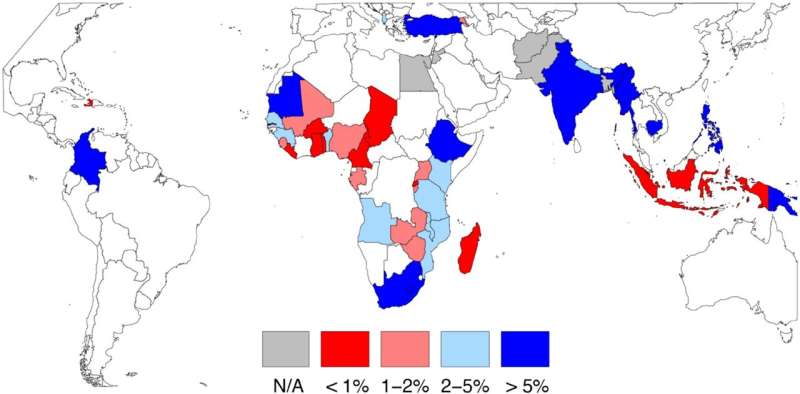A recent analysis has uncovered unexpected trends in childfree populations across developing countries, revealing a significant number of individuals choosing not to have children. Conducted by researchers Zachary Neal and Jennifer Neal from Michigan State University, the findings were published in the open-access journal PLOS One on November 12, 2025.
The study highlights a global decline in fertility rates, sparking interest in the growing prevalence of childfree individuals. While research has extensively documented childfree trends in affluent nations, little attention has been paid to this demographic in developing regions. The Neals aimed to fill this research gap by employing innovative software for data analysis, specifically tailored for the Demographic and Health Surveys (DHS) Program. This collaboration between the U.S. and local partners focuses on collecting comprehensive fertility data.
Using this new analytical tool, the researchers examined data from more than 2 million individuals across 51 developing countries, identifying a total of 37,366 childfree people between the years 2014 and 2023. The study revealed striking variations in childfree rates, with the prevalence differing substantially even among countries within the same geographical region.
Regional Disparities in Childfree Rates
For example, among single women aged 15 to 29 in Southeast Asia, approximately 7.3% of those surveyed in the Philippines identified as childfree, compared to a mere 0.4% in Indonesia. The highest prevalence of childfree single women in this age group was found in Papua New Guinea, at 15.6%, while Liberia recorded the lowest rate at 0.3%. These findings illustrate that the decision to remain childfree is influenced by various cultural and societal factors.
Further analysis indicated a strong correlation between the prevalence of childfree individuals and a country’s human development level, which encompasses health, education, and living standards. Countries with lower scores on the Human Development Index, such as Chad, reported childfree rates of about 1%. In contrast, nations with higher human development, like Turkey, showed rates closer to 6%.
Additionally, the study found that gender equality and political freedom are linked to higher rates of childfree individuals, although these factors had a less pronounced effect compared to human development.
Implications for Future Research
This research suggests that the choice to remain childfree is not limited to wealthier countries. The authors emphasized the importance of recognizing this trend in the context of reproductive health needs and other social support systems for childfree individuals in developing nations.
“There has been increasing attention to the rising number of individuals in wealthy, highly developed countries who do not want children,” the authors noted. “However, this research demonstrates that the choice to be childfree is not restricted to the developed world, and that many individuals in developing countries are also choosing not to have children.”
The findings pave the way for future studies to better understand the reproductive choices and health needs of childfree populations globally, contributing to a more comprehensive understanding of family planning and social dynamics in diverse contexts.
For further details, refer to the original study by Neal ZP et al. in PLOS One (2025). DOI: 10.1371/journal.pone.0333906.
